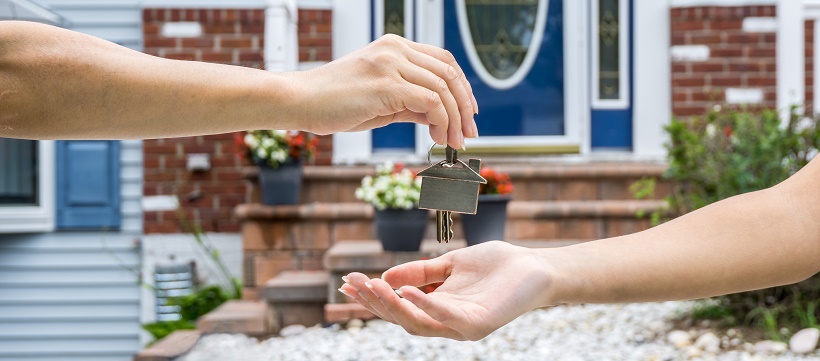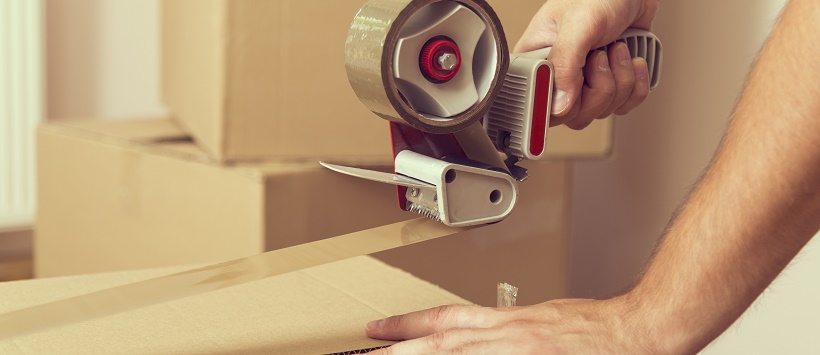As exciting as it is to find your new home, there’s a lot of stress that comes along with it. The moving process can be a bit overwhelming, and at Milestone Community Builders, we want to do our best to help you every step of the way. This moving timeline will take some of the guesswork out of the whole experience, from searching for a home to moving in. Many families plan to move in the summer, which gives you plenty of time to get on track.
Finding your home

Eight months out
- Check your credit rating. The higher your rating, the easier it will be for you to secure a mortgage.
- Find a lender. Consider a wide range of lenders, including your own bank, another major financial institution and a national mortgage company.
- Get pre-approved for a mortgage. While this is not a concrete guarantee, it will give you an idea of how much you can spend on your new home.

Seven months out
- Evaluate your needs. Make a list of “must-haves,” “like-to-haves” and “dream features” that you plan to look for in your new home. Then, create a checklist of everything you need, from the number of bedrooms and types of interior features to commute time and neighborhood amenities.
- Look at homes. Visit homes in person as well as checking online listings; use your checklist to evaluate each home.
- Make an offer. Once you’ve found a home that fits your budget and matches your needs, you can make an offer! Be prepared to sign a contract and make a deposit.

Six months out
- Apply for a mortgage. Once you’ve signed a contract, you should immediately apply for a mortgage. If all is in order, you’ll likely be able to secure a mortgage similar to your pre-approval estimate.
- Conduct inspections. Have your home appraised and inspected to confirm its value and identify potential problems.
- Close on your home. On closing day, you will be expected to bring all relevant paperwork, sign several documents and provide a down payment. Afterward, you will be handed a key, and the home will be yours.
Moving into your home

Five months out
- Determine your budget. Decide if it’s better to hire professional movers or rely on friends and family. Also, figure out how much you’ll have to pay for moving supplies.
- Start de-cluttering. Begin the process of evaluating your belongings and getting rid of anything that won’t be going with you. This includes everything from old magazines to clothes. Donate what you can, and have a yard sale to get rid of unwanted items.
- Do your research. Start looking into schools, medical options and other important considerations in your future neighborhood. Put binders together to keep this information organized.

Three months out
- Hire movers. Get estimates and find a company you can rely on.
- Gather supplies. You’ll need boxes, tape, labels, packaging materials, etc.
- Pack non-essentials. Begin boxing up anything you won’t need to use between now and moving day.
- Take inventory. Photograph everything you own and determine its value for insurance purposes. Separate valuables that you’ll want to take with you personally when you move.
- Clean out your pantry. If you don’t want to eat it and you don’t want to take it with you, it should go.

Two months out
- Obtain a floor plan. Use the floor plan of your new home to start planning where all your belongings will go when you move in.
- Gather important documents. These include your medical and dental records, as well as school records if you have children. Transfer your car registration and get a new driver’s license if you’re moving to a new state.
- Make travel arrangements. Reconfirm the date with the movers and make the necessary arrangements for your belongings, yourself and any pets you may have.

One month out
- Continue packing non-essentials. Make another pass through your home, packing anything that won’t be needed until you move.
- Contact utility companies. Arrange for gas, electric and water disconnections in your old home, as well as connections in your new home.
- Notify your landlord. (This step only applies if you’re moving from a rental.)
- Have your car serviced. (Especially if you’re driving it a long distance!)

Two weeks out
- Make change-of-address arrangements. Notify friends, family, banks, credit card and insurance companies, employers and the post office.
- Do major packing. It’s time to start packing anything that isn’t an essential part of day-to-day life.
- Dispose of trash. Throw out expired products and anything else you don’t want that can’t be reused. Properly dispose of things like gas cans, paint and cleaning supplies.

One week out
- Confirm again. Contact the moving company and reconfirm all your moving day details.
- Pack an “essentials” kit. Include anything you’ll need on the first day in your new home, and take this with you personally (not on the moving truck).
- Finish packing. Everything that’s not in your essentials kit gets boxed up.
- Clean up. Make sure your old home is clean before you move out.

One day out
- Label everything. Every box you move should be clearly labeled with your name and new address.
- Clear out the kitchen. Get rid of the last of your food, and clean and defrost the freezer.

Moving day
- Be there. Make sure you are on hand when the movers arrive! Also, help with fragile and valuable items.
- Do a final sweep. Make sure nothing was left behind and unplug any appliances that are staying in your old home.
- Hit the road. Turn out all the lights, lock the doors and make necessary arrangements for the keys.
Having a moving timeline will make the entire moving process easier and less stressful, but every situation is different. This timeline is great as a basic guide, but by all means change it to reflect your specific needs! Contact MileStone at any time to learn more about moving to your new home in Austin, Texas.